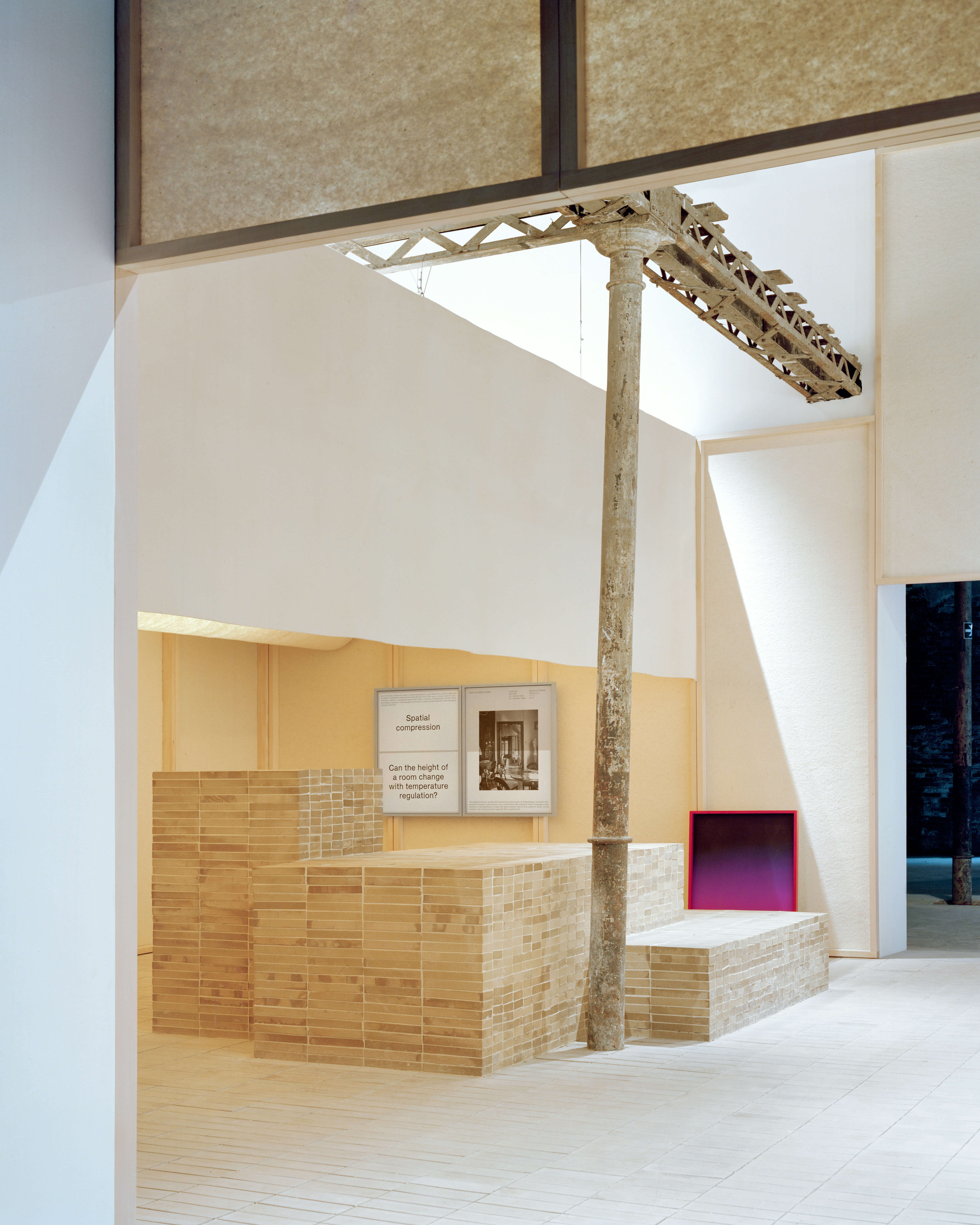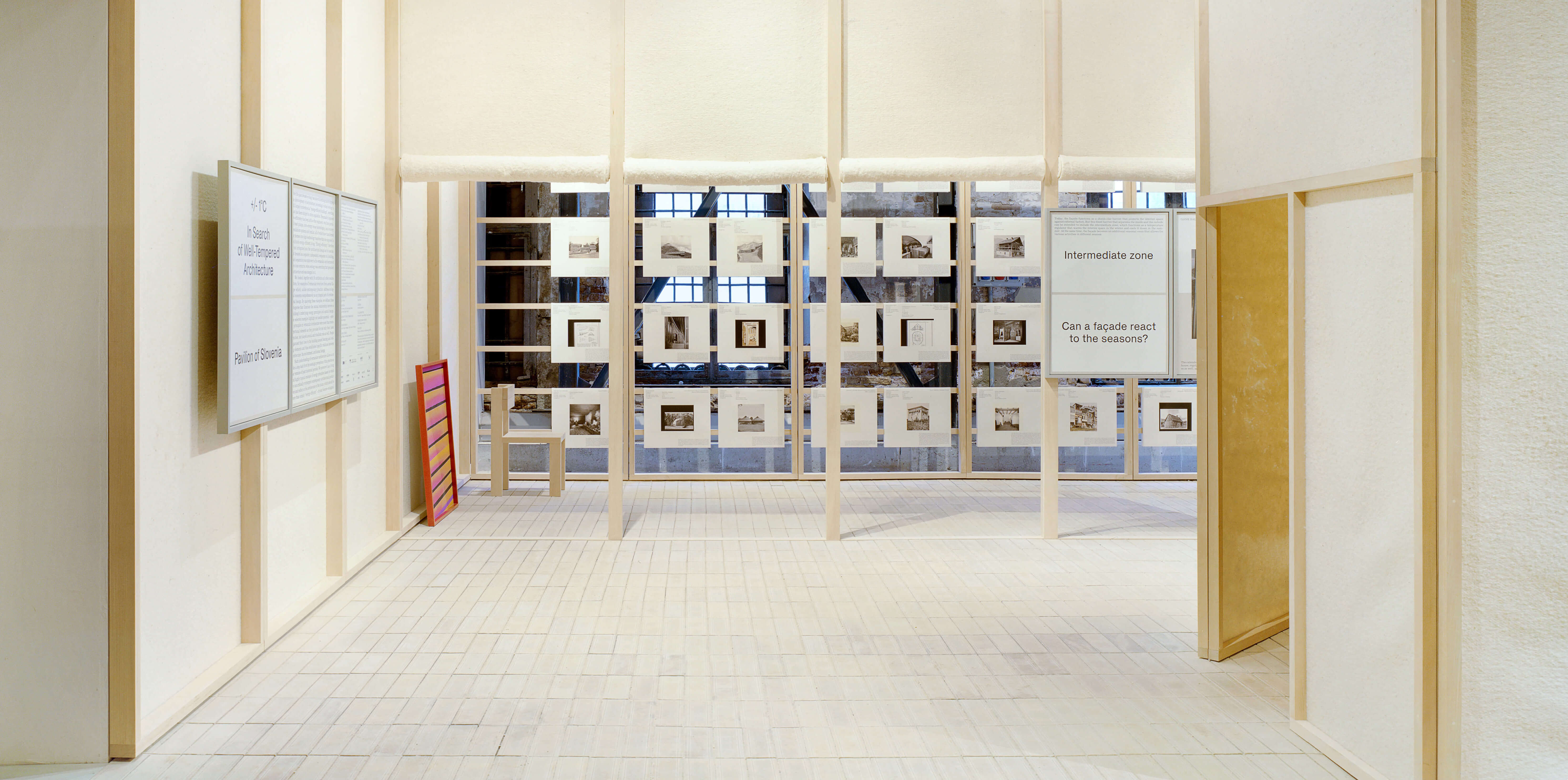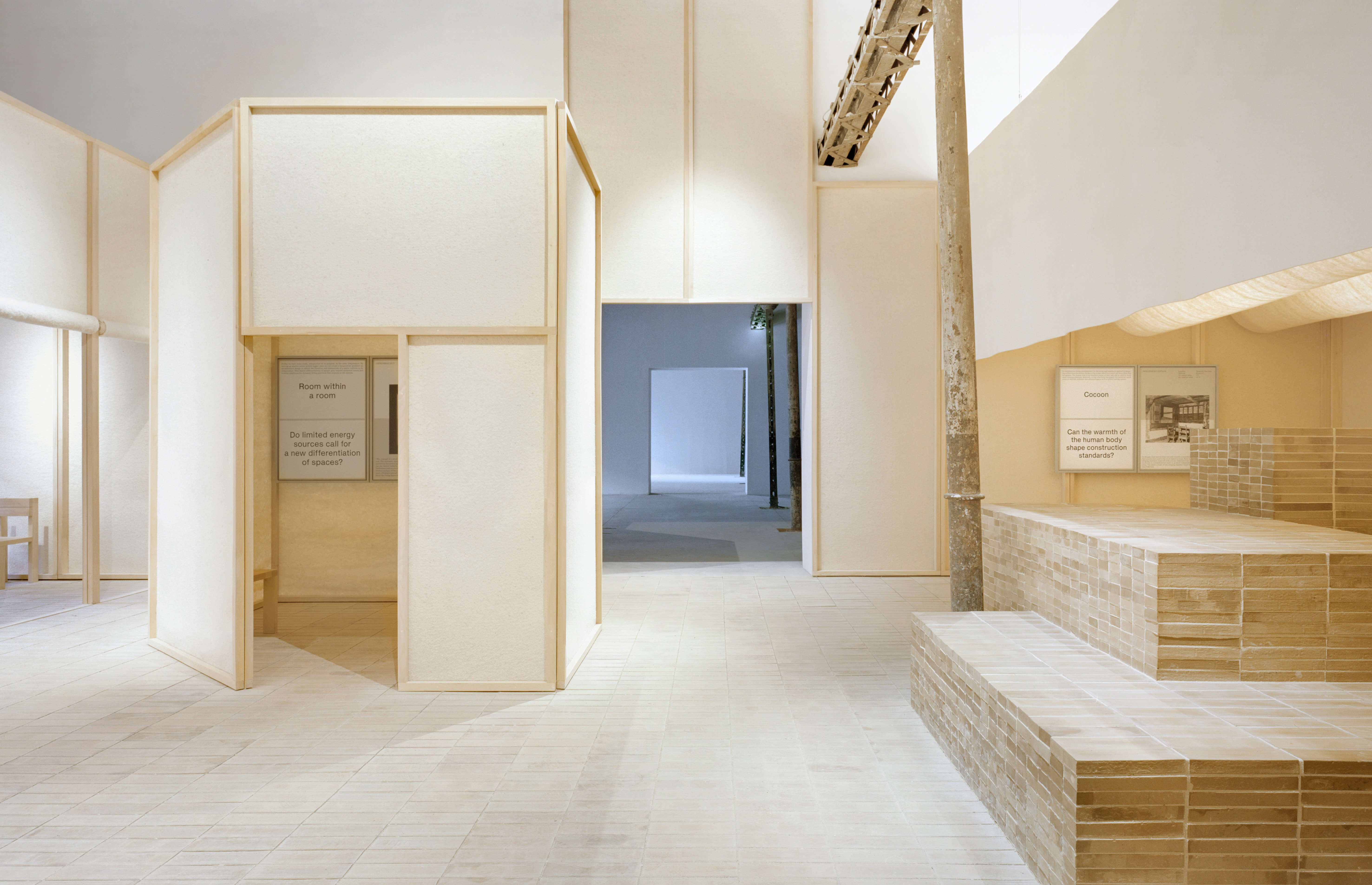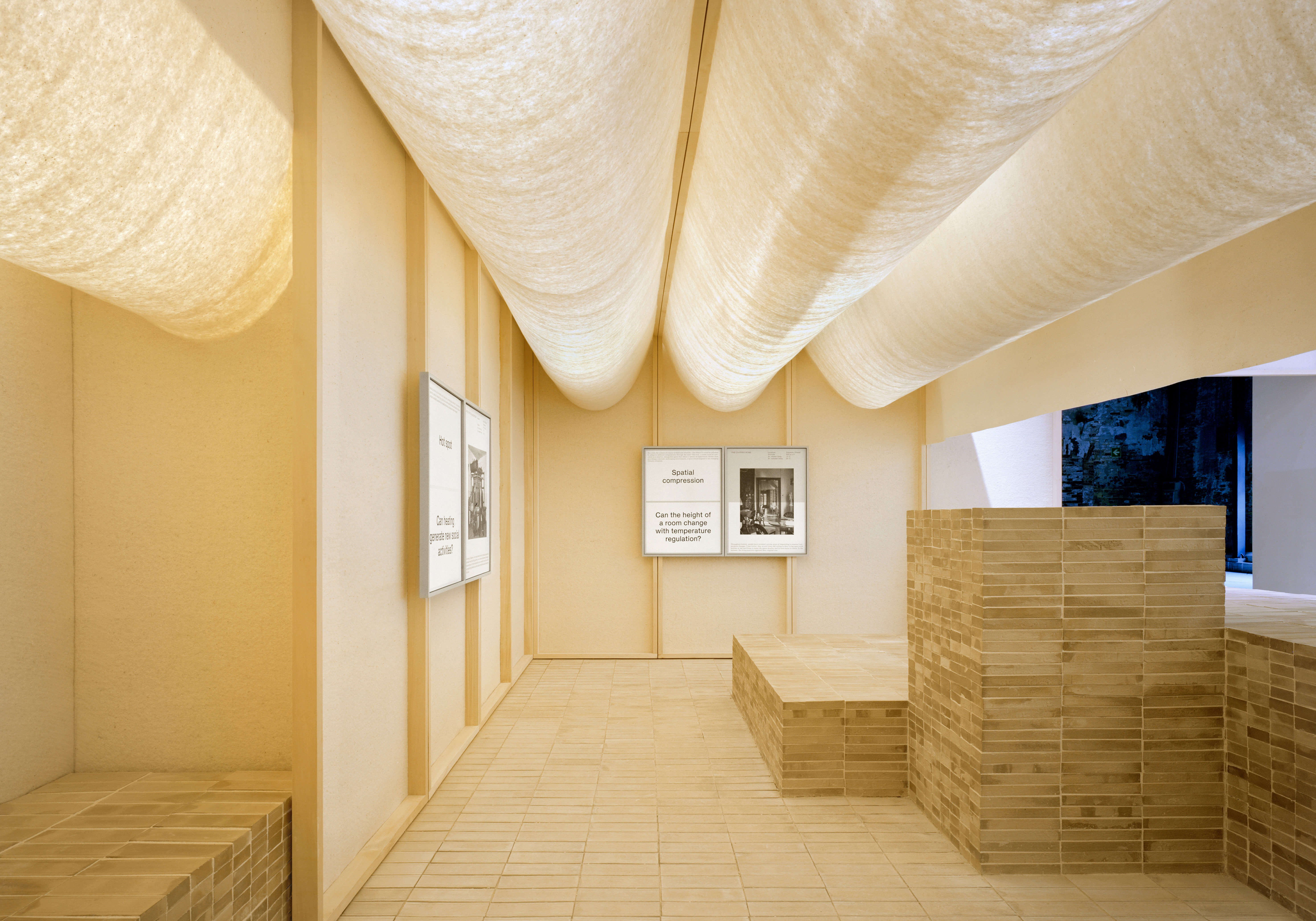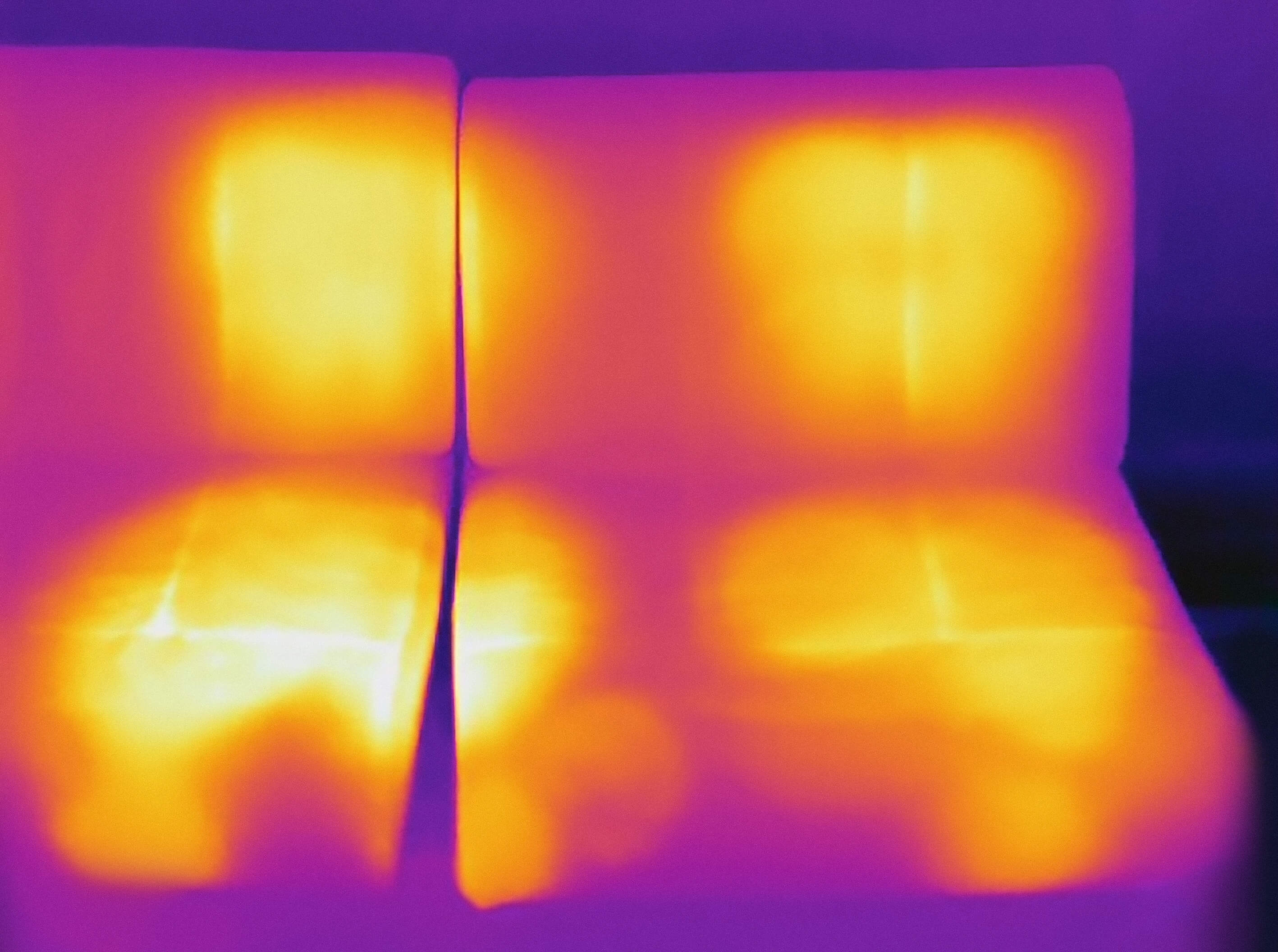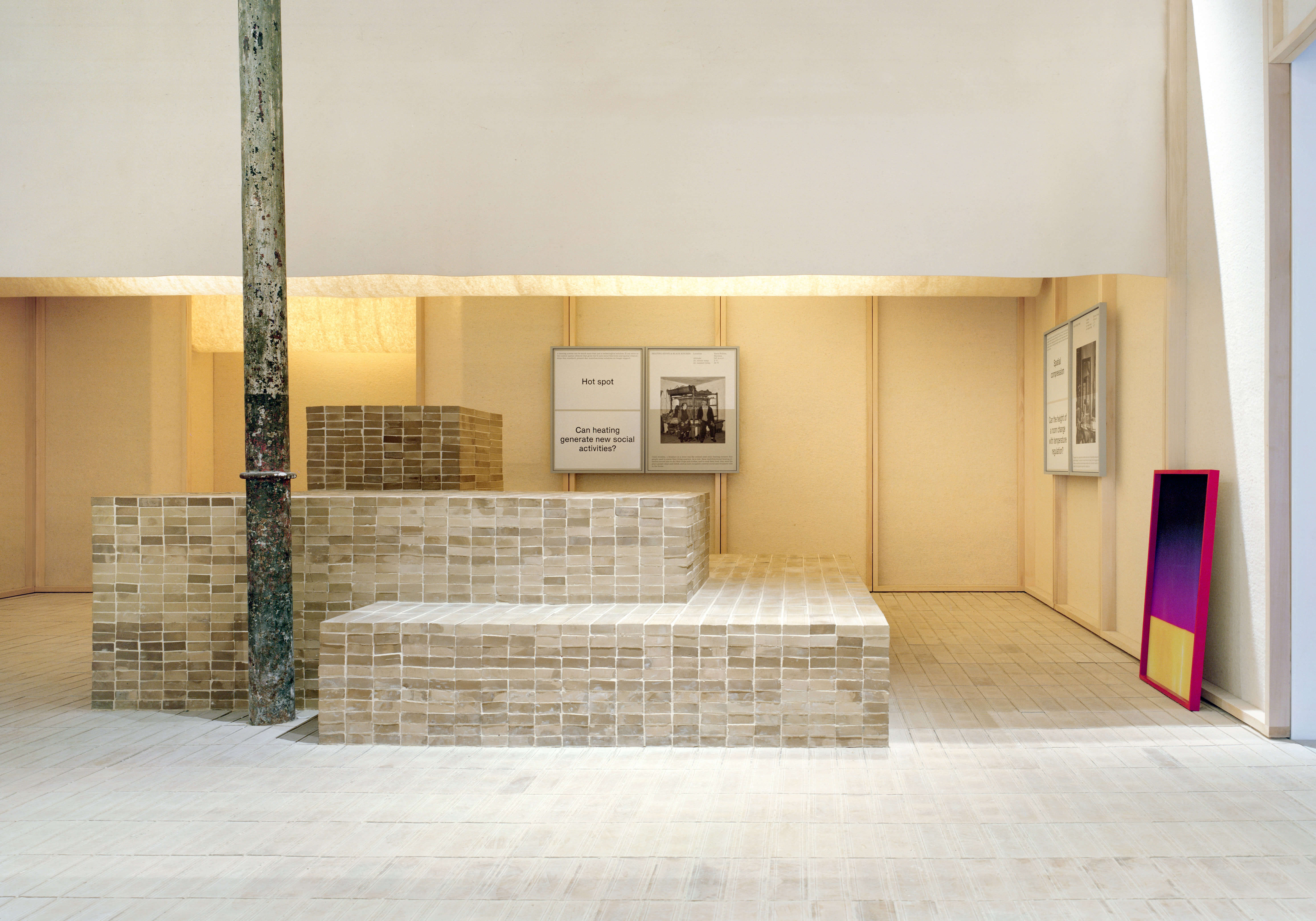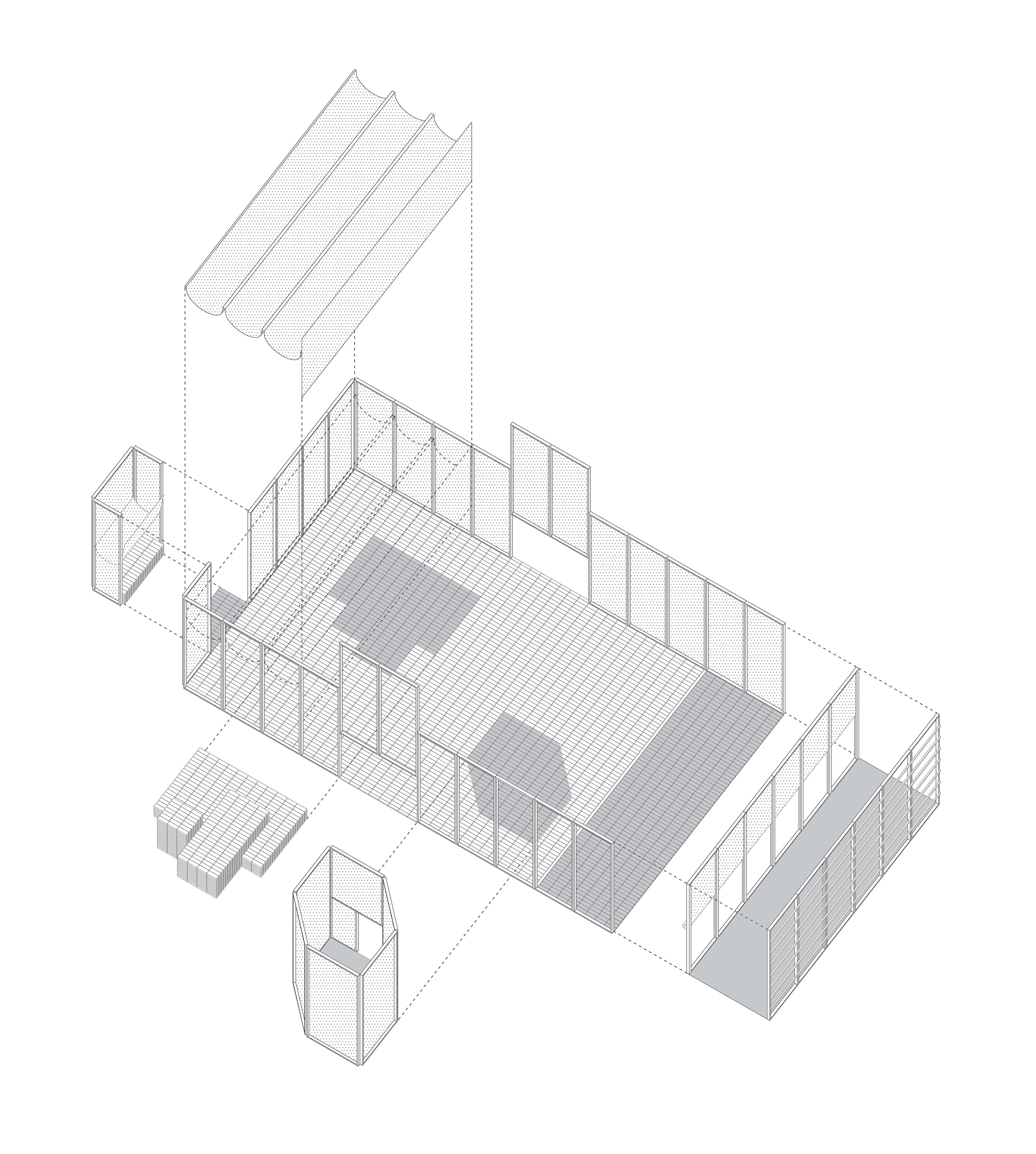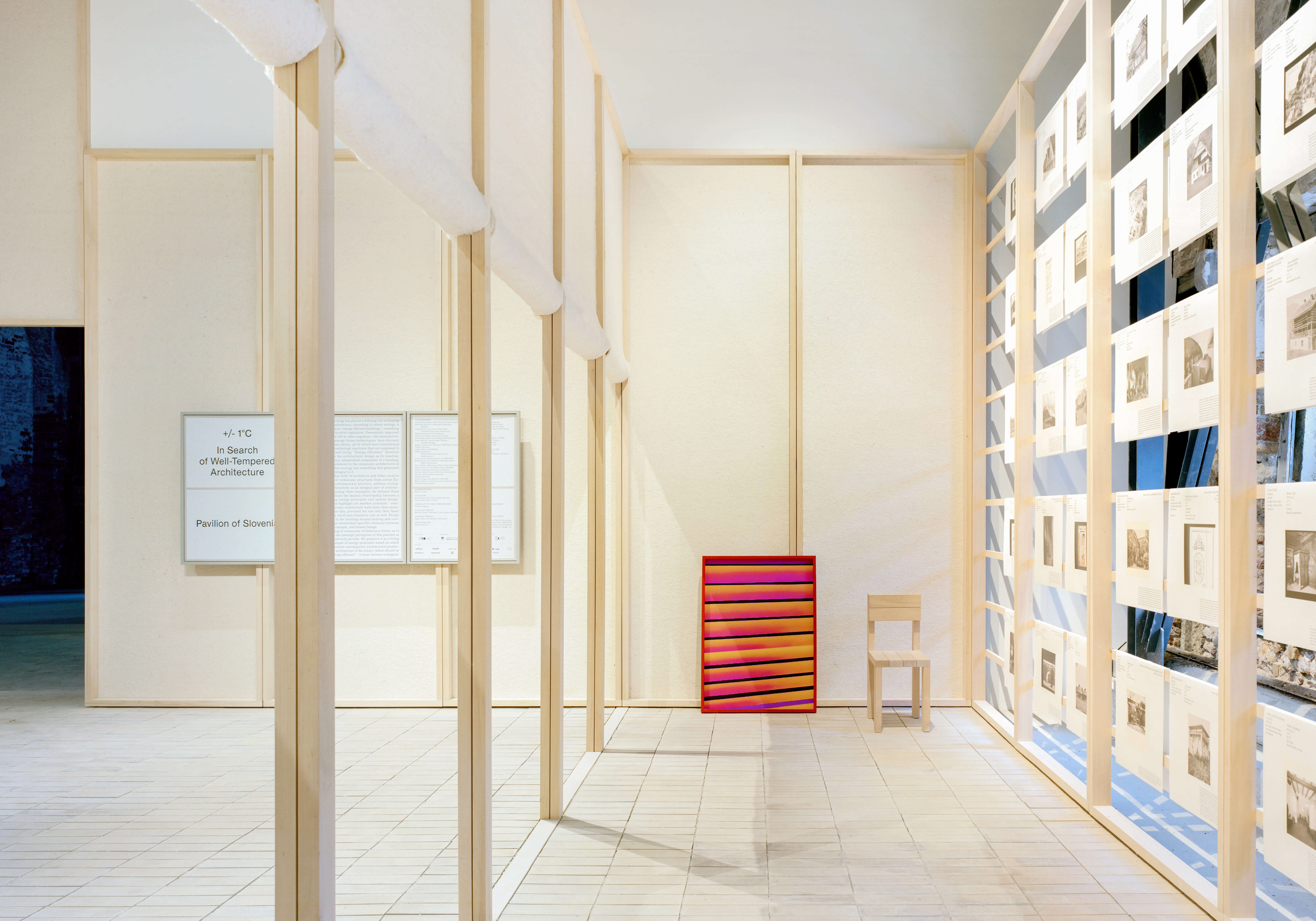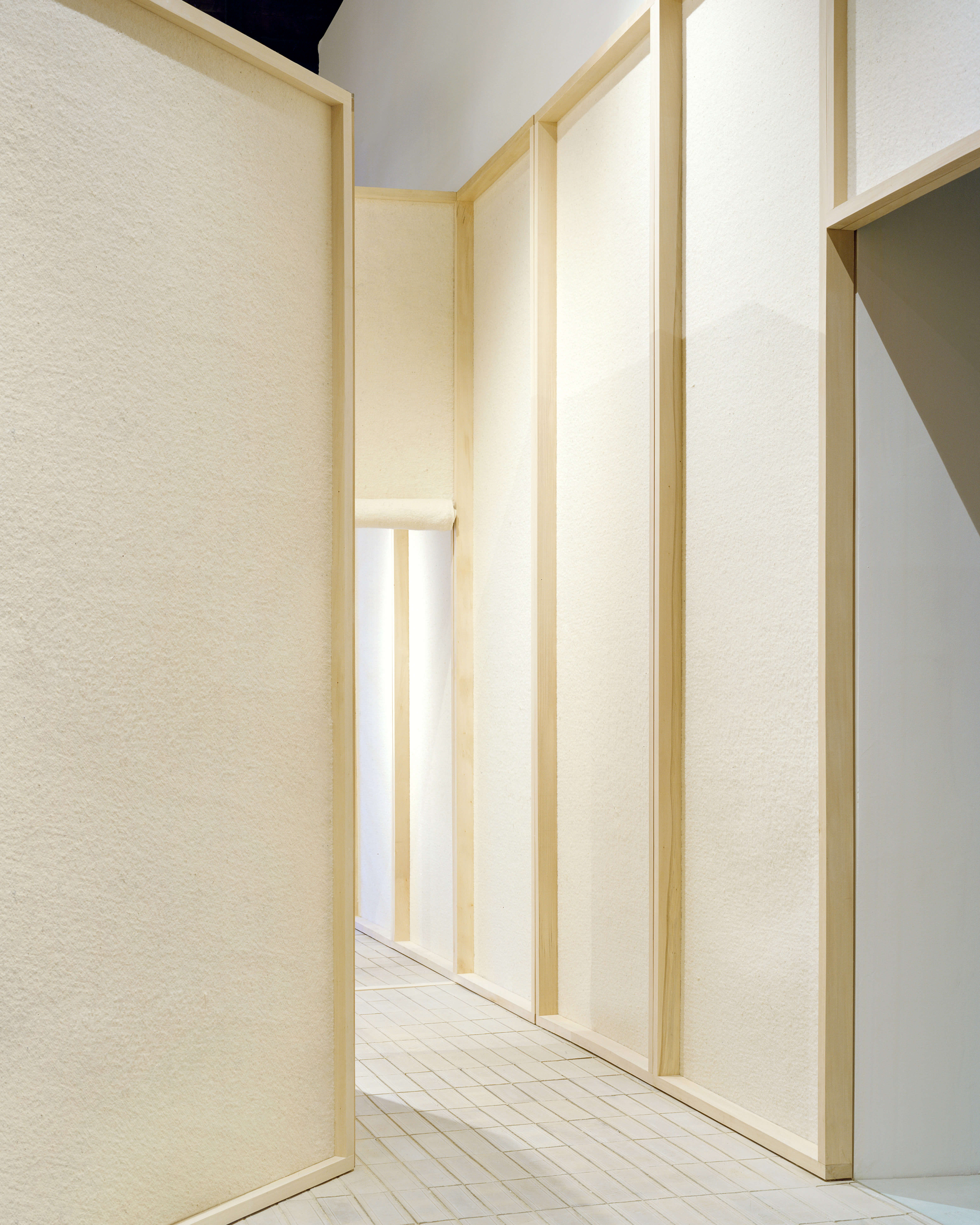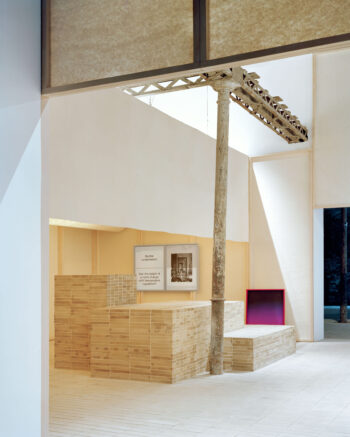
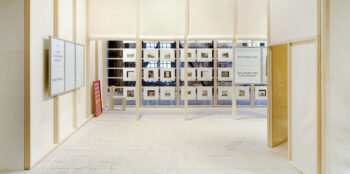
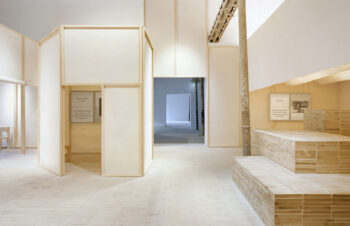

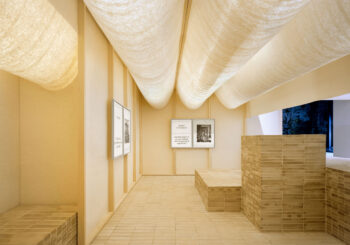
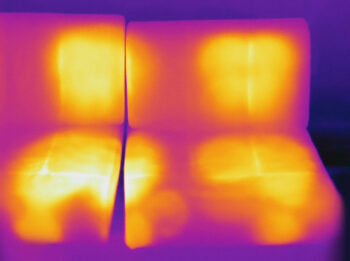
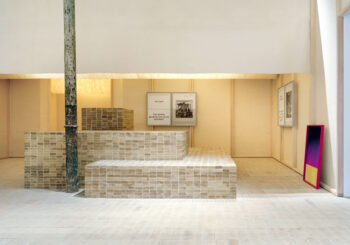
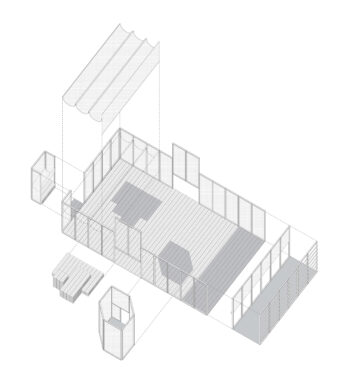
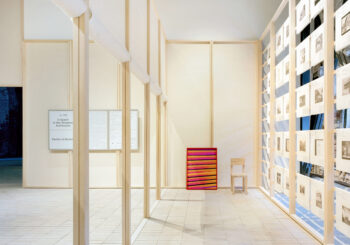
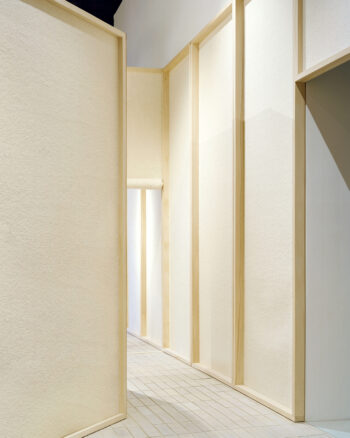

Pavilion of Slovenia
La Biennale di Venezia

Intermediate Zone
La Biennale di Venezia

Room within a Room
La Biennale di Venezia

Thermal Photography

Spatial Compression
La Biennale di Venezia

Thermal Photography

Hot Spot
La Biennale di Venezia

Axonometric Projection
Axonometric projection

Intermediate Zone
La Biennale di Venezia

Pavilion of Slovenia
La Biennale di Venezia
Project:
Pavilion of Slovenia, 18th Venice Architecture Biennale
Location:
Venice, Italy
Year:
2023
Client:
Ministry of Culture
Surface:
120 sqm
Photography:
Maxime Delvaux
Thermal Photography:
Klemen Ilovar
Graphic Design:
Žiga Testen
Project Team:
Mertelj Vrabič Arhitekti, Vidic Grohar Arhitekti
+/- 1 °C: In Search of Well-Tempered Architecture
Over the past decade ecology has played a defining role in shaping the development of architecture, according to which ecology is still largely understood as “energy efficient buildings”, something that has been subject to strict regulation. Presumably improved eco-efficiency has been left to other engineers, who have provided heat pumps, zero-energy house technologies, heat-recovery ventilation systems and similar, all of which have transformed our homes into high-technology machines that are supposed to facilitate energy efficient living. “Energy efficiency” therefore is not integrated into the architectural design as its baseline, but treated as a separate, independent component of a building. Such separation was unknown to the vernacular architectures of previous centuries, when ecology was something that generated architecture and was integral to it.
We looked, together with 50 architects and other creative actors, for examples of vernacular structures from across Europe which, unlike contemporary practice, address ecological concerns comprehensively as an integral part of architectural design. By analysing these examples, we defined those categories that illustrate the mutual relationship between a building’s underlying energy principles and spatial design. The selected examples highlight yet another potential – energy principles in vernacular architecture were more than monofunctional elements as they provided for not only their basic function, but played a social and ritualistic role as well. People organised their lives in the building around heating and cooling elements and thus established specific relations between architecture, the environment, and human beings.
Such understanding of vernacular architecture allows us to take a step back from the nostalgic perception of this practice as the remains of past historical periods. We perceive it as a living and highly topical example of energy principles based on which we can critically reinterpret contemporary architectural production and reflect on the architecture of the future, which should be more than simply “energy efficient” – it must become ecological.

